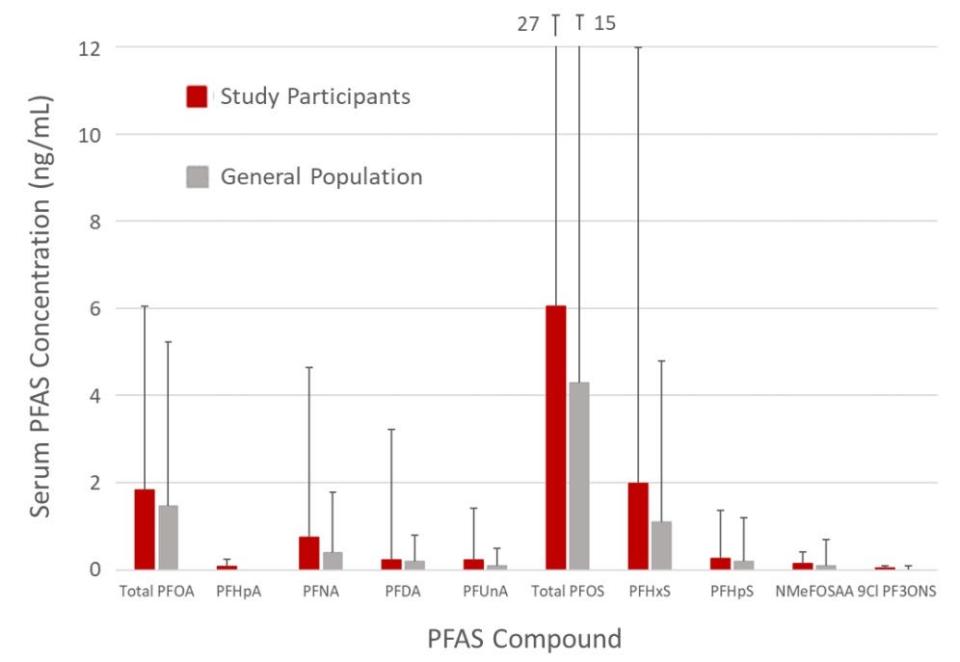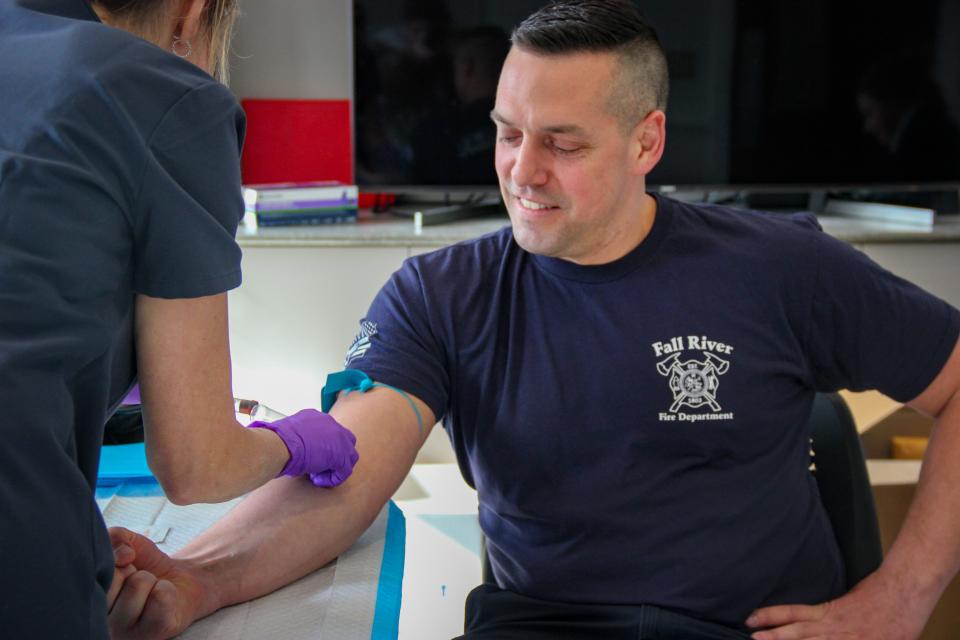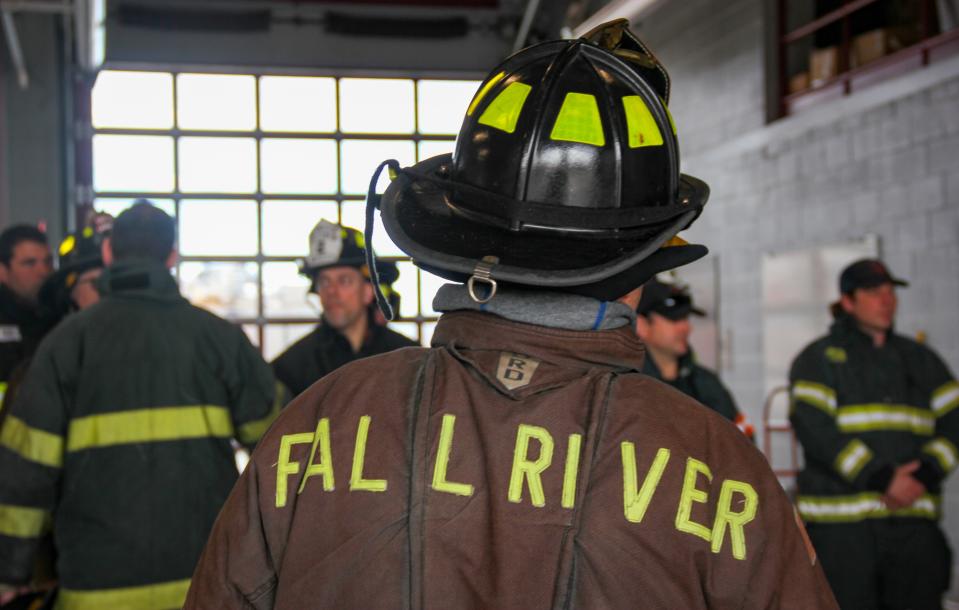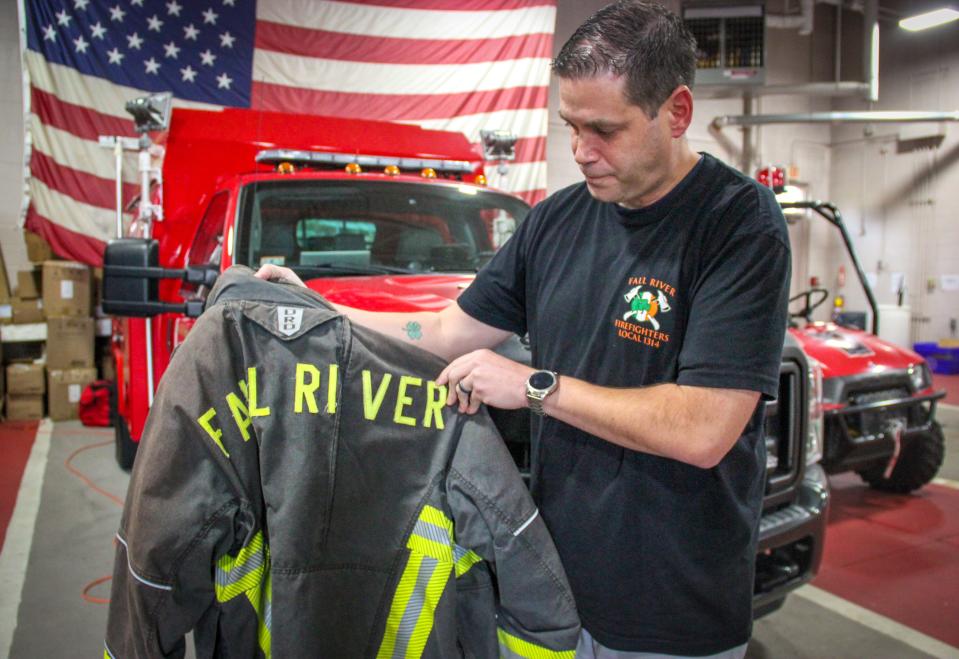Fall River firefighters were tested for cancer-causing chemicals; the results are worrying
FALL RIVER — Last March, six Fall River firefighters took part in a unique pilot study on the island of Nantucket, testing how much of the cancer-causing “forever chemicals” in their gear rubbed off on their skin and entered their bloodstream. The results aren’t encouraging so far.
As one small part of the study, 18 firefighters from Fall River, Hyannis and Nantucket had blood samples drawn to measure the level of PFAS in their system.
Most firefighter protection gear is made with PFAS, a class of over 9,000 different chemicals also found in almost every consumer product to make them waterproof, durable, stain-resistant or nonstick. Environmental groups have linked exposure to certain PFAS compounds to serious and potentially fatal health consequences, including thyroid disease, high cholesterol levels, ulcerative colitis, and several different kinds of cancer — cancers of the liver, breasts, prostate, testicles, and kidneys being most common.
The blood draw results have been completed and were distributed individually to each participant in the study, including the six from Fall River.

'Protect the boys':Firefighter, Fall River manufacturer are teaming up to make PFAS-free underwear
Out of all the PFAS groups tested for, the firefighters’ average is “all above the national average," said Ayesha Khan, co-founder of the Nantucket PFAS Action Group.
“It’s not groundbreaking, but it’s confirming the information that’s out there, which is part of good science," Khan added. “Firefighters do in fact have higher levels of PFAS in their blood.”

Individual results are private. A copy of the report obtained by The Herald News shows that though some firefighters’ blood contained less of the potentially hazardous chemicals than the average general population, most were above; one outlier was far above.
“There is a person who lives in a contaminated area, who had contaminated water … and you can see they’re way up there, because they had a double exposure,” Khan said, meaning exposure to PFAS from both his environment and his job. “That person is that outlier all the way through. That’s why things like this are important, because that person had no idea.”

What do the results mean?
According to guidance from the National Academies of Sciences, Engineering and Medicine, both the general population and the median of this study have a level of PFAS in their blood that falls into a category of moderate PFAS exposure. The thing to do: get periodic blood lipid and cancer screenings.
The firefighters’ levels were several points higher, and, according to Khan, some individual results fell into a category of elevated PFAS exposure. The thing to do: on top of the above tests, at every checkup, have doctors test your thyroid function, check for kidney and testicular cancer, and check for ulcerative colitis.
Khan’s husband, Nantucket Fire Dept. Capt. Nate Barber, is in remission from seminoma, a form of testicular cancer, and underwent radiation and surgery. They believe his cancer was likely caused by exposure to PFAS as a part of his job.
Khan said the results don’t mean firefighters will all develop cancer, but that they have an elevated risk compared to the rest of the population and need to be proactive about their health. “Make sure you get your annual checks,” Khan said. “Make sure you get your physicals. It’s important."

'We're dying in that stuff': Firefighter says toxic chemicals in his gear may cause cancer
Why is this important?
Because their job puts them in close contact with dangerous chemicals, and their gear is frequently made with PFAS, firefighters are at very high risk of developing cancer.
The Fall River Fire Department over the years has seen its share of cancer that some suspect could be related to their job. Firefighter and local union president Jason Burns has noted the cancer deaths of Paul Chippendale in 2013 and Adam Franco in 2015, both in their 30s, were eye-opening for him. Burns is now also executive director of the Last Call Foundation, an organization that promotes firefighter safety, including issuing grants for studies into PFAS in turnout gear and helping departments like Fall River buy new gear.
In 2022, Fall River firefighter Michael O’Reagan joined a class-action civil lawsuit against over 20 manufacturers of PFAS and firefighter gear. O’Reagan was diagnosed with lymphoma in 2016, and was the first city firefighter to undergo surgery, chemotherapy and radiation before returning to duty two years later. The lawsuit is pending in U.S. District Court of South Carolina. In a 2018 Herald News profile, O’Reagan said he was the third firefighter from his truck company at the Stanley Street station to be diagnosed with lymphoma.

What’s next for the PFAS study?
The scientific study is being funded by a grant from the Toxics Use Reduction Institute at the University of Massachusetts Lowell, performed by Dr. Courtney Carignan of Michigan State University.
The main part of the study was a swab of firefighters’ arms after they simulated work while wearing gear; it's meant to determine how much PFAS sheds off their gear onto their skin. According to Carignan and Khan, those results will likely be complete by the end of this year.
This year, Khan’s group has obtained a second TURI grant, this time to produce educational material to help teach firefighters about the dangers of PFAS in their gear.
“We want to have an educational way to get information for the boots-on-the-ground firefighters,” Khan said. “Perhaps the people up top understand, but information just isn’t getting to the firefighters in a constructive way. They don’t know not to wear their gear as much. We want to make sure it gets to the everyday firefighters.”
Like with the Nantucket study, the Fall River Fire Department will be part of that educational effort, she said. “That’s definitely something that Fall River should be proud of.”
Dan Medeiros can be reached at dmedeiros@heraldnews.com. Support local journalism by purchasing a digital or print subscription to The Herald News today.
This article originally appeared on The Herald News: Fall River firefighters in PFAS study see early bloodwork results

